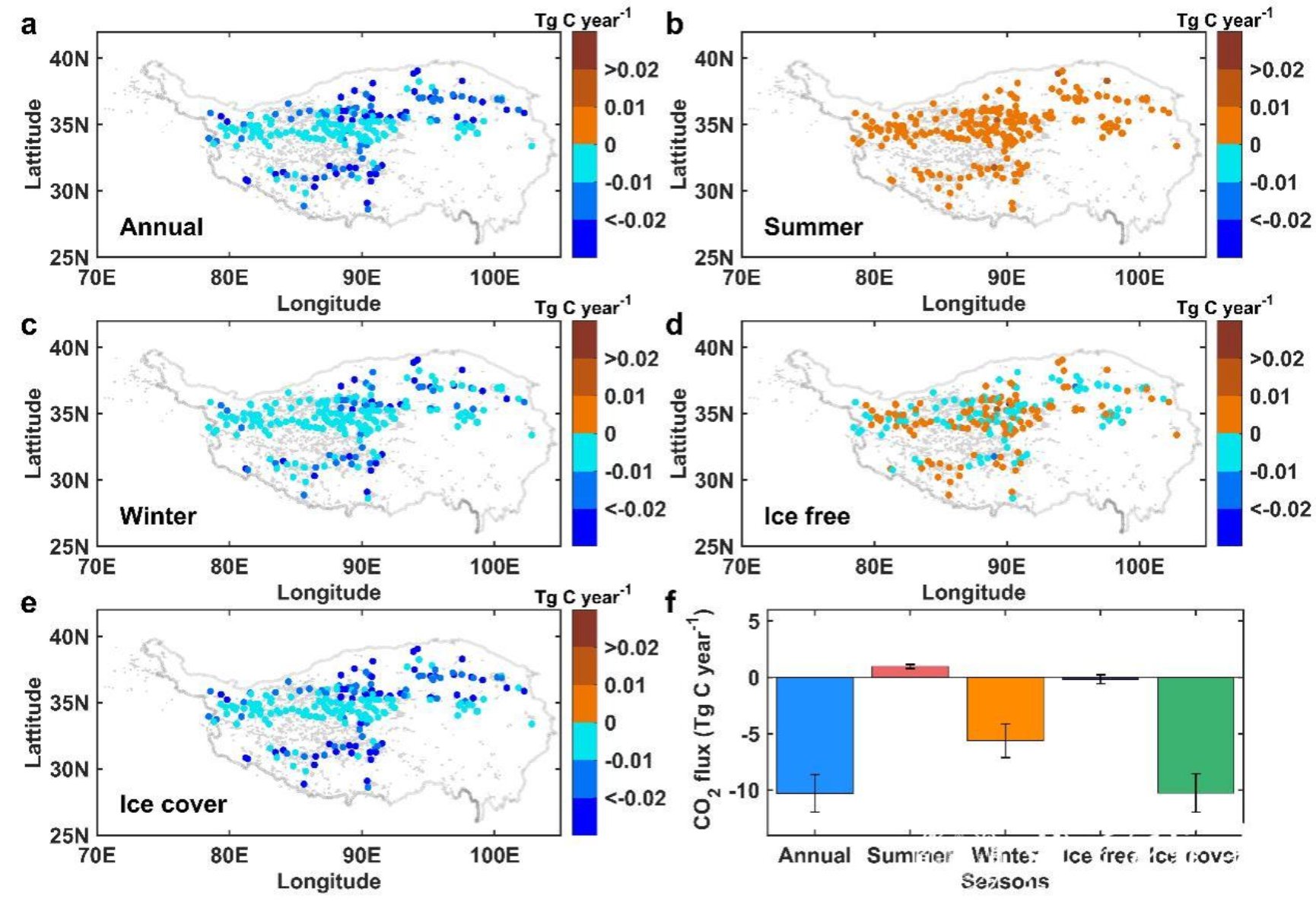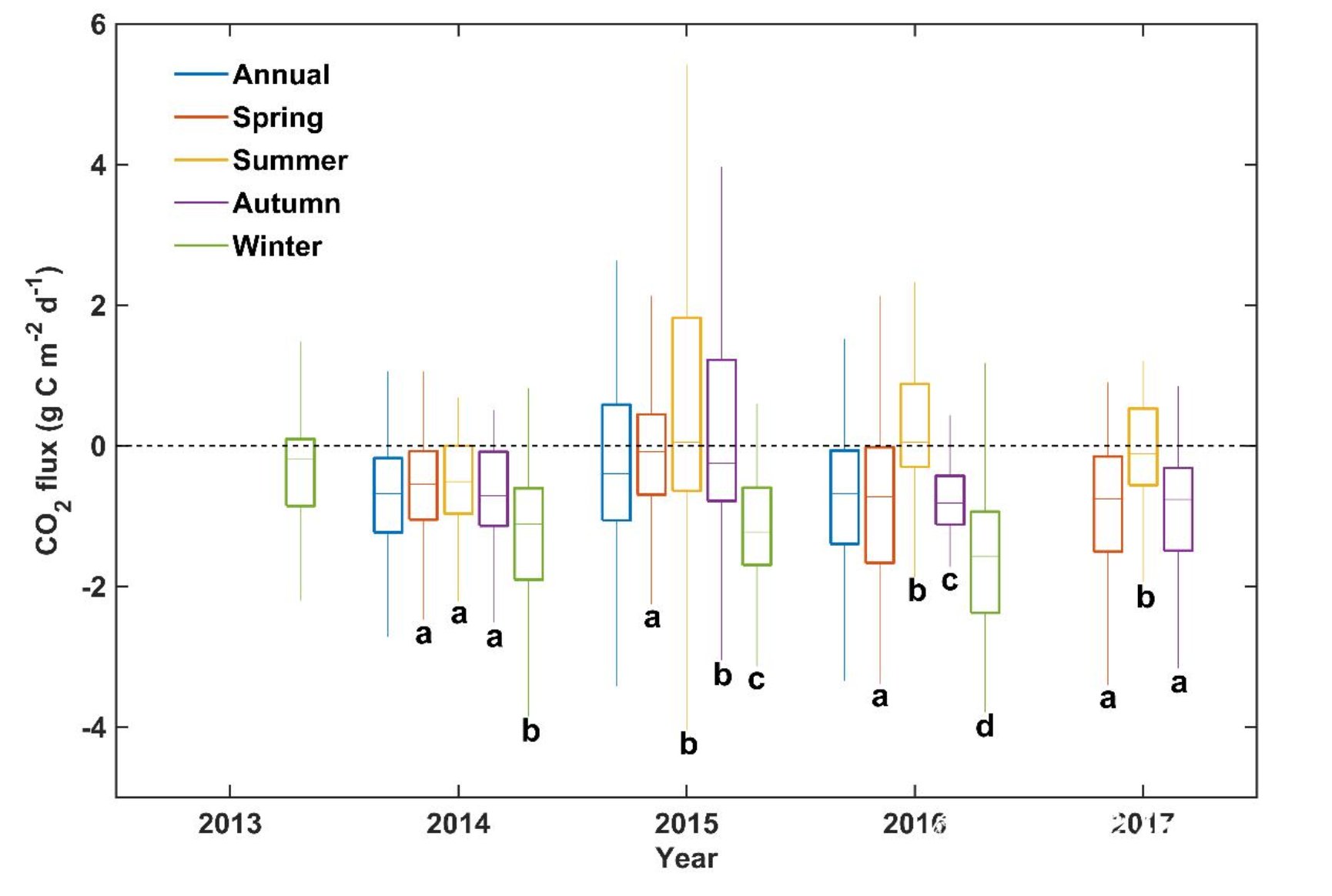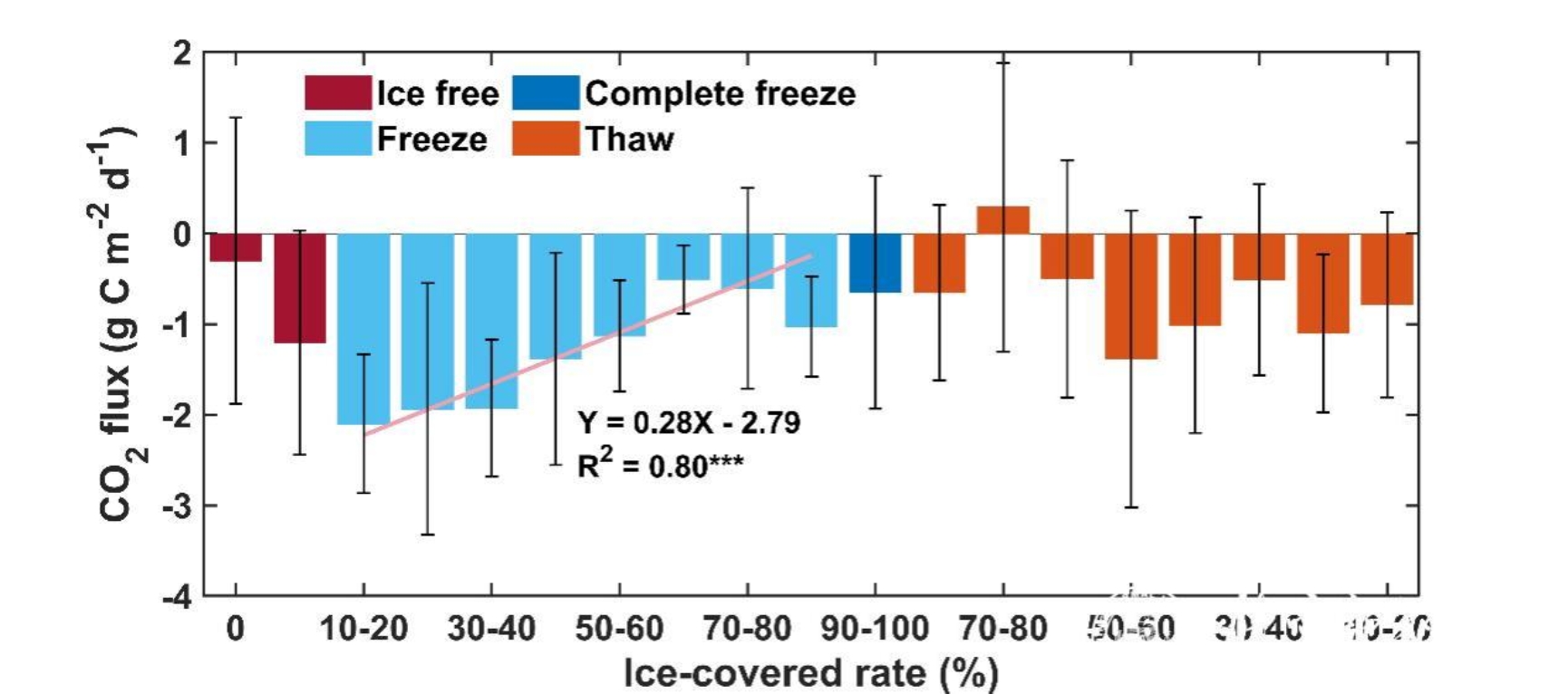The team of Prof. Li Xiaoyan of the Faculty of Geographical Sciences found that the saline lakes of the Qinghai-Tibet Plateau can absorb a large amount of carbon dioxide in winter as a potential carbon sink
Saline lakes account for 23% of the total area of the Earth's lakes and 44% of the total volume of water bodies, which have important impacts for regional hydrology and carbon cycles. Lake and atmospheric CO2 exchange is currently one of the international hot topics. Most of the studies worldwide used the collection of lake water samples in summer and model simulation methods to estimate the annual CO2 flux of lakes, which lacked direct observation data on the continuous dynamics of lake CO2 flux throughout the year, and ignored or overestimated lake CO2 flux in winter. Most studies have shown that saline lakes are carbon sources, but there is still a great deal of uncertainty.
The Qinghai-Tibet Plateau(QTP) is one of the areas where lakes are most widely distributed. It possesses a saline lake area of 27,600 km2, accounting for more than 70% of the total area of plateau lakes. Due to the winter freezing in the lakes of the QTP, instrumentation and experimental observation are very difficult, and there are few continuous carbon flux observation data throughout the year. In this study, by analyzing the vortex and micro-meteorological continuous observation data of the largest saline lake (Qinghai Lake) on the QTP for 5 years (2013−2017), it was found that the saline lake can absorb a large amount of carbon dioxide in winter, which was a potential carbon sink, and the annual CO2 absorbed by Qinghai Lake from the atmosphere was 880,000 tons of carbon (0.88 ± 0.49 Tg C yr−1), equivalent to nearly 10% of the annual carbon emissions of Qinghai Province. Then, through the linear equation of temperature and CO2 flux, it was estimated that the annual CO2 absorbed from the atmosphere by all caline lakes on the Tibetan Plateau is about 10 million tons of carbon (10.28 ± 1.65 Tg C yr−1), which was equivalent to one-third of the net productivity of the terrestrial ecosystem of the QTP. Finally, by analyzing the change of lake ice and the chemical process of lake water, the carbon sink mechanism of saline lakes on the Plateau was preliminarily revealed, and the possible mechanism of CO2 flux changes of highland saline lakes affected by lake water chemical processes and lake ice was proposed.

Figure 1 CO2 flux distribution characteristics of saline lakes on the Qinghai-Tibet Plateau (QTP) in different seasons and freezing periods

Figure 2. Potential mechanisms of CO2 emission (absorption) in saline lakes
In this study, the CO2 flux in 2013-2017 of Qinghai Lake, the largest saline lake on the QTP, was calculated. The results showed that except for the summer and autumn of 2015 and summer of 2016, Qinghai Lake was mainly characterized by carbon sinks, and the CO2 flux rate during the ice-covered period was −0.87 ± 0.38 g C m−2 d−1, which was twice that of the ice-free period (−0.41 ± 0.35 g C m−2 d−1). Secondly, a linear equation constructed by using the relationship between temperature and CO2 fluxes evaluated the CO2 fluxes of 373 saline lakes with an area greater than 1 km2 on the QTP at different periods, and it was found that the saline lakes on the Plateau were carbon sources in summer and carbon sinks in winter, and absorbed 10 million tons of carbon (10.28 ± 1.65 Tg C yr−1) throughout the year, equivalent to one-third of the net productivity of terrestrial ecosystems on the Plateau. Further, combined with the simulation data of four models in CMIP5 under RCP2.6, RCP4.5 and RCP8.5 scenarios, the prediction analysis of the CO2 flux of saline lakes on the QTP from 2006 to 2099 shows, that under the extremely sustained warming scenario (RCP8.5), the plateau saline lakes may be converted from the original carbon sink to carbon source from the middle of the 21st century. The results challenged the general perception that“Global lakes are carbon sources and that glacial periods can be ignored due to low CO2 exchanges between lakes and the atmosphere covered by ice”.

Figure 3. CO2 flux of Qinghai Lake in different seasons from 2013 to 2017
Finally, the effect of climate variables and lake ice coverage on CO2 flux in Qinghai Lake were analyzed and the potential internal mechanisms were explained. Changes in CO2 fluxes in saline lakes are influenced by both lake water chemistry processes and lake ice coverage. From the ice-covered period to the ice-free period, as the temperature decreases, the pH of the lake increases, the OH− in the lake increases, and the CO2-related chemical equilibrium in the lake is converted to HCO3−, so that the PARTIAL pressure of CO2 in the lake decreases, and the lake absorbs CO2 from the atmosphere, so the freeze period begins to show a higher CO2 absorption rate, and as the lake ice coverage rate increases, the obstruction of lake ice leads to a decrease in the rate of CO2 absorption by the lake. During the freeze-thaw period, with the decrease of lake ice cover and the increase of temperature, the rate of CO2 absorption by lakes shows certain fluctuations.

Figure 4. The CO2 flux of Qinghai Lake changes with the lake ice coverage
The work was published in the international journal Global Change Biology under the title “Significant winter CO2 uptake by saline lakes on the Qinghai−Tibet Plateau.” Professor Li Xiaoyan of the Faculty of Geographical Sciences BNU is the first author and corresponding author, and Shi Fangzhong, a doctoral student of the class of 2018, is the second author and corresponding author. The research was funded by the Second Tibetan Plateau Scientific (2019QZKK0306) and the Natural National Science Foundation of China (41730854, 41971029).
LINK: https://onlinelibrary.wiley.com/doi/10.1111/gcb.16054


